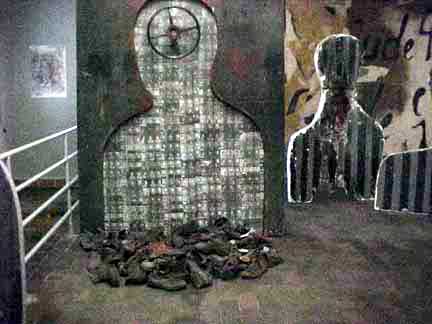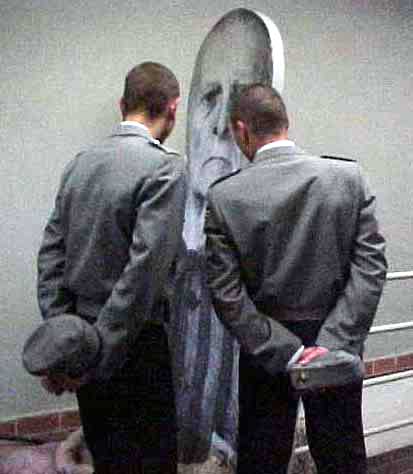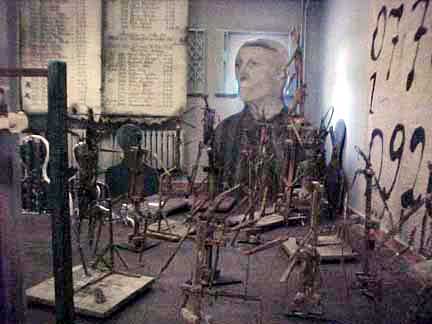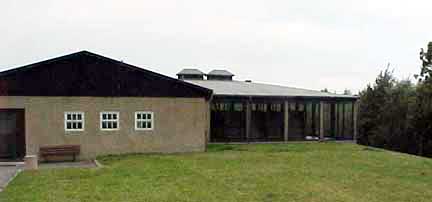Buchenwald Art Gallery
The Buchenwald art exhibit features Holocaust
art, mainly drawings and paintings done by inmates of the camp.
Some of this artwork was officially sanctioned by their Nazi
captors, but most of the art on display was done in secret, or
by survivors after they were liberated.
One room in the art gallery is devoted
to the work of Artist Jozef Szajna who enlarged photographs of
Buchenwald inmates and then pasted these photos on huge cardboard
cutouts, as shown in the photographs below.

Art exhibit shows pile
of prisoner shoes
The picture above shows a pile of shoes
worn by the inmates including two pairs of women's shoes, one
of which is a pair of white high-heeled pumps and one that looks
a pair of white ballet style slippers. There is no display anywhere
in the camp of the wooden clogs that were worn by some of the
prisoners in the other camps.
The picture below shows two German soldiers,
standing respectfully with their hats in their hands, in front
of a Szajna cutout photograph of a Buchenwald political prisoner.
Their grandfathers died fighting Communism, only to have their
sons and grandsons raised under Communism.

German soldiers examine
photo cutout of political prisoner

Artwork made from huge
enlargement of inmate photo

Metal artwork done
by Buchenwald camp survivor
The former disinfection building at Buchenwald,
which was built in 1942, was converted into an art museum in
1990. The photo below was taken on my visit to Buchenwald in
1999.

Former disinfection
building was converted into an art museum
When the camp was in operation, prisoners were taken to the disinfection building upon arrival. The procedure was to shave the new prisoner's head and all his body hair in an attempt to control lice which spreads typhus. Then his civilian clothing would be surrendered and disinfected with Zyklon-B, an insecticide which was also used in the death camps for gassing the Jews.
The clothing and personal possessions
were then kept in the nearby storehouse until such time as the
prisoner would be released. (In the early days of the concentration
camps, before the start of World War II, many prisoners were
released after serving an indeterminate sentence.) After that,
the prisoner would be dipped into a disinfection solution and
then chased naked through an underground tunnel to the neighboring
storehouse where he would receive a striped blue and gray uniform
that looked like a pair of pajamas.
This page was last updated on September
14, 2009
|